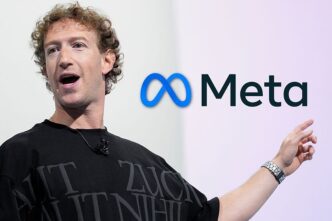Meta has officially released its highly anticipated Llama 4 Open Weight AI Model, pushing the boundaries of what open AI systems can do. Designed as a direct challenge to advanced models from OpenAI, Google, and DeepSeek, Meta’s Llama 4 offers powerful performance combined with the flexibility of open-weight architecture—making it a notable milestone in the evolving AI landscape.
Unlike typical closed systems, Llama 4 is open weight, meaning its trained parameters are publicly available. This lets developers use it locally without relying on cloud APIs—although certain licensing restrictions may apply for modifications or commercial use.
Llama 4 Comes in Multiple Forms
Meta introduced three distinct versions of the Llama 4 model:
- Llama 4 Scout: A compact yet powerful AI model built for efficiency. It’s natively multimodal, meaning it can process both text and image data. Using a mixture-of-experts (MoE) structure, Scout utilizes 17 billion active parameters. It’s capable of handling up to 10 million tokens—units of data like words or pixels—making it exceptionally fast and scalable. The kicker? It can run on just one Nvidia H100 GPU, making it ideal for developers seeking advanced performance without huge infrastructure costs.
- Llama 4 Maverick: Another downloadable model available via Meta’s Llama platform and Hugging Face. It’s designed for broader general-purpose AI tasks, giving developers another tool in their arsenal.
- Llama 4 Behemoth: As the name implies, Behemoth is Meta’s heavyweight model. With an eye-popping 288 billion active parameters—and nearly 2 trillion in total—it’s engineered to guide and train the smaller Llama 4 models. This model excels at solving complex math problems, handling multiple languages, and working with rich image data. It’s a true all-rounder and serves as the foundation of the Llama 4 family.
Meta AI Gets a Boost Across Platforms
These models are more than research tools. Meta plans to integrate Llama 4 into its products—including WhatsApp, Instagram, and Messenger—making its AI assistant smarter and more capable in everyday use. Whether you’re asking questions, editing images, or solving problems, Llama 4 is built to handle it.
Outperforming the Competition
Meta claims Llama 4 outpaces leading models like Google’s Gemini 2.0 Flash-Lite, Gemma 3, OpenAI’s ChatGPT-4o, and Mistral 3.1 in multiple benchmarks. From reasoning and math to image understanding, early performance tests suggest Meta’s latest model is one of the most capable open-weight LLMs on the market today.
Even Google CEO Sundar Pichai recognized Meta’s achievement, publicly congratulating the team behind the Llama 4 launch—further emphasizing the significance of this release in the AI race.













